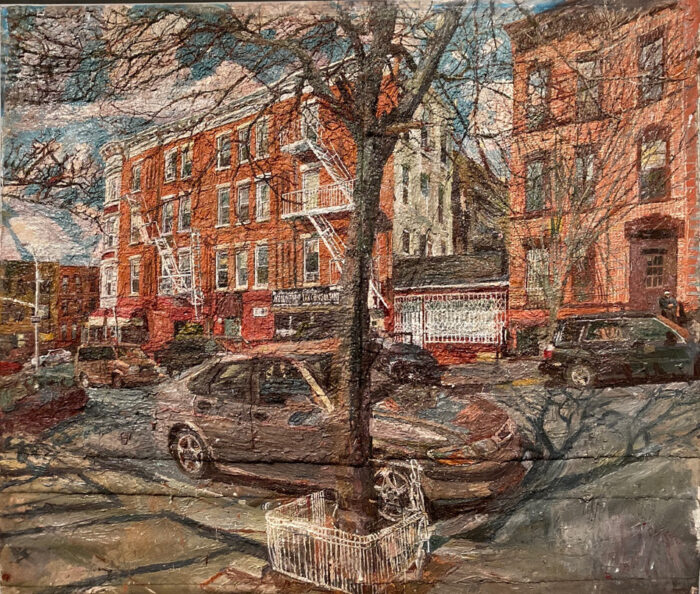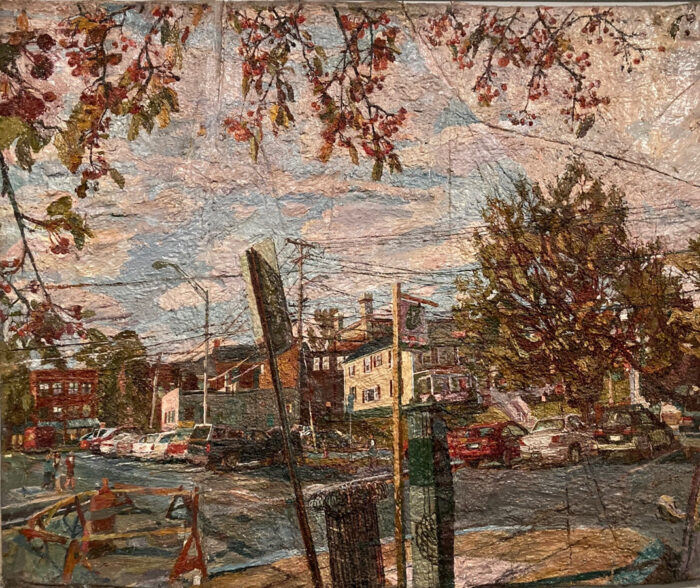Guest Review by Glen Cebulash
In his seminal essay of 1921, Tradition and the Individual Talent, T.S. Eliot provides the reader with, if not a proper definition of art, a rather stark choice. The work, whether it be a poem, a painting, or a piece of music, will inevitably fall into one of three categories: the traditional, the repetitive, or the novel. At the top of this hierarchy lies the traditional. Elliot’s explanation of what constitutes traditional is multifaceted, but in part:
“It involves, in the first place, the historical sense….and the historical sense involves a perception, not only of the pastness of the past, but of its presence…. This historical sense, which is a sense of the timeless as well as of the temporal and of the timeless and of the temporal together, is what makes [an artist] traditional. And it is at the same time what makes [an artist] most acutely conscious of his place in time, of his contemporaneity.”
Suffice it to say it is not what we commonly mean when we use the word. A genuinely traditional work of art, which is also a genuinely new work of art, has an organic connection to the past, but not by merely resembling it or repeating its strategies. Nor can it succeed beyond the fleeting thrill of some slick exoticism. This necessary linkage with the past allows the new work to take its place among its predecessors, inevitably being judged by them, but its introduction into that existing order is also disruptive. In forcing those earlier works to make room for it, the new work of art modifies and, even if only slightly, changes its meaning. Thus, it can be said that the really radical thing a truly new work of art does is not so much alter the future but the past.
The Stanley Lewis Exhibition, Persistent Vision, currently on view at the Swope Art Museum in Terre Haute, IN, clearly embodies the spirit of Eliot’s thesis. Lewis, a prolific painter and beloved teacher, possessed of tremendous energy, enthusiasm and inventiveness, has been mining the American landscape for over five decades. And, while it is fair to say that he is intensely committed to his subject, the work consistently transcends it. His paintings, somewhat incongruously, build an almost granular realism on top of a highly personalized cubist substrate. The paintings and drawings that constitute the mature phase of his career, many of which are on display in this exhibition, are deep investigations into the nature of seeing and the nature of image-making. The largest and most involved examples, as pocked and riven as World War I battlefields, take months and sometimes years to complete. Brimming with an almost child-like awe at the plentifulness of the observable world and scrupulously democratic in their attentions, the paintings are nonetheless rigorously intellectual and self-conscious explorations, deeply grounded in the rich history of the genre. Lewis is a deserving heir to that history precisely because he refuses to slavishly submit to it. The result is a tour-de-force, and despite its remote venue, this dense and comprehensive gathering of drawings, paintings, and sculptures is a must-see.
Lewis’s paintings, simultaneously familiar and other-worldly, conform to and confound our expectations. Their subject and their means, much like their realism and their modernity, are at times odd but always energetic bedfellows. In Northampton Parking Lot, for example, Lewis situates us in a rather mundane circumstance, hundreds of yards behind what appears to be the town’s business district. The lower half of the painting is busy with the stuff of such places: parked cars, signposts, telephone wires, garbage cans, road repair, etc., etc. In the upper half, a subdued sky of blue-violets and pinks provides the backdrop for an almost decorative passage of leaves and branches that undoubtedly belong to the tree canopied above us. Barely perceptible at first, a subtle accordion-like structure emerges across the frieze of forms, creating a counter-rhythm that both contains and scrambles the scene before us. The viewer struggles to get a firm grasp on this elusive volume but, as is so often the case in Lewis’ work, agrees finally to simply play hide-and-seek with it. Equally difficult to grasp is the life cycle of its rippling and undulant surface – an agglomeration of globs and pustules and the not-so-hidden pentimenti of torn and reconstituted canvas. These paintings are not easy to look at. They argue, they doubt, they insist, they overwhelm, and finally, they take their pound of flesh.
In View from the Porch, East Side of House, Lewis plants us on a second-story deck looking down the length of his house and toward a distant, if obscured, horizon. The color, fully realized, is weighty and light-filled. The image is replete with detail, from the garden rake at our feet to the smallest branches of a faraway tree, and we are once again, at times quite literally, in the weeds. The breadth of the space described is rivaled only by the severity of its cinematic plunge, but this roller coaster ride is constantly interrupted by the superabundance of information, the impossible geometry, and the raucous materiality of the surface itself. The abstract structure of the painting is in a tense standoff with its insistent descriptiveness, and it is a tension that does not and cannot fully resolve. Rather, it persists infinitely and in all directions, and the picture plane crackles under this relentless strain of oppositions. The ground won’t lie down; the paint won’t play nicely with its chosen targets, and the geometry won’t fully acquiesce to the image, and yet, despite this consistent mayhem, Lewis renders a dependable world.

Stanley Lewis, View from the Porch, East Side of House, 2003-2006, Acrylic on canvas 38 3/4 x
48 inches
Looking hard and long at the exhibition, I was repeatedly reminded of Eliot’s program. Lewis, unlike most if not all of his best contemporaries, isn’t simply a spirited and engaging landscape painter. Nor is he a clever pyrotechnician. He is, as Leland Bell once said of Andre Derain, attempting something far more demanding. He is “risking liberty within tradition.” So here, among the weeds and chain link fences and all the bricks and branches, we find Sassetta and Breughel, Claude and Constable, Cezanne and Derain, to say nothing of the Egyptians, the medieval painters, and the cubists. They are deeply embedded in the paintings themselves, and one hears them whispering across the surface of every work. There is an abiding love here for all these artists, but again, Lewis isn’t merely an adoring suitor. His ardor tears them apart.
One emerges from this show convinced that the best pieces, alá Eliot, are indeed new and genuine works of art. They possess, as the great French artist Jean Helion once said of Poussin’s paintings, “all the infinity that can be got in a picture.” They say something about the landscape, about looking, and about painting itself that has never quite been said before. In so doing, they invite us to reconsider, even if only slightly, everything.
Glen Cebulash teaches painting and drawing at Wright State University in Dayton, OH. He served as Chair of the Art Department from 2009 to 2022 and is currently a member of Bowery Gallery in NYC.







Terrific article, with several complex concepts clearly explained. Have bookmarked this one to read again.